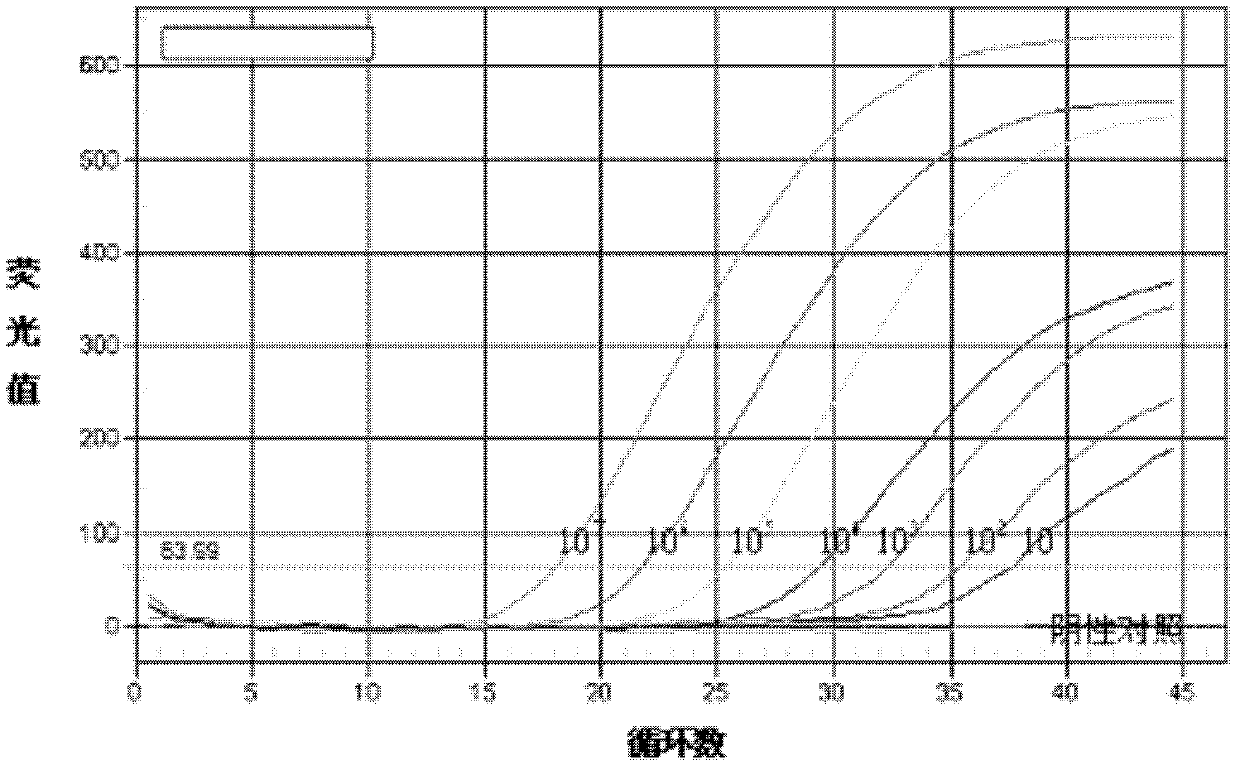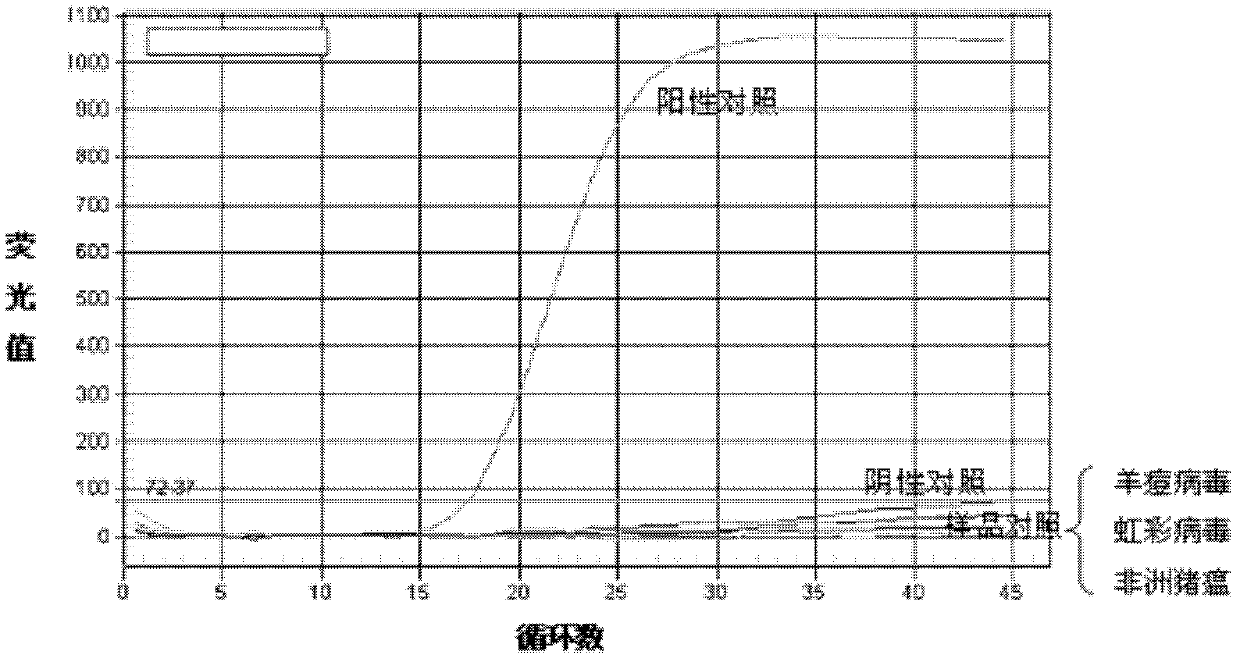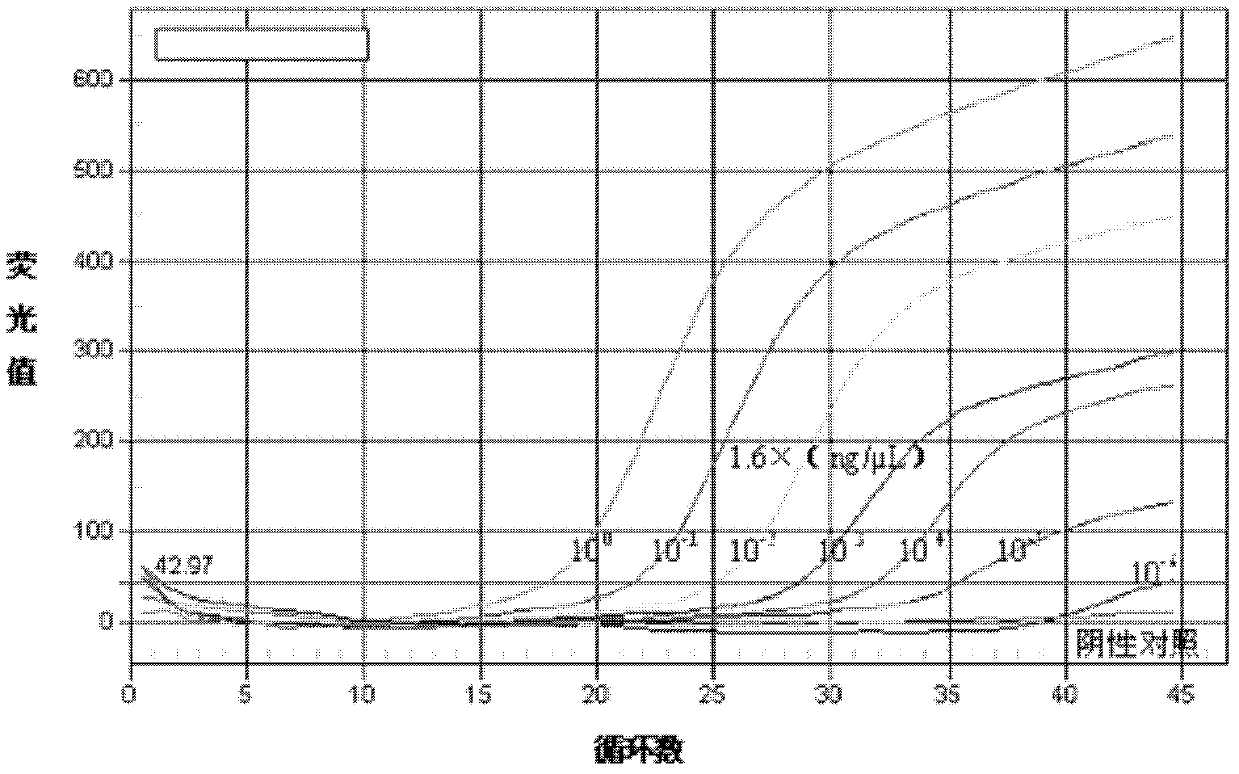Primers and probe for detecting fragment S of rift valley fever virus
A Rift Valley fever virus and probe technology, applied in the field of genetic engineering, can solve problems such as differences in pathogenicity of virus strains, and achieve the effects of high sensitivity, high sensitivity, and rapid response
- Summary
- Abstract
- Description
- Claims
- Application Information
AI Technical Summary
Problems solved by technology
Method used
Image
Examples
Embodiment 1
[0019] The preparation of embodiment 1 primer and probe
[0020] 1.1 Design and synthesis of primers and probes
[0021] The conserved sequence of the S segment of Rift Valley fever virus was retrieved from the NCBI Gene Bank (GenBank) of the National Center for Bioinformatics in the United States, and the accession number was (DQ380149). The gene sequence was analyzed by MegAlign software, and according to the design principles of primers and probes, a pair of primers were screened in the conserved region of the sequence with BeaconDesigner 5.0, and a fluorescent TaqMan probe was set in the amplified region of the primer pair.
[0022] The primer sequences are:
[0023] RVFVU1: 5'-GGATTACTTTCCTGTGATATCTGTTG-3'
[0024] RVFVL1: 5'-GTATCCTGGGAGGRCCATCWC-3' (R is A or G, W is T or A), the length of the amplified product is 92bp;
[0025] The sequence of the probe (RVFVP1) is: 5'-ACTCCACTGACACAACACGACGACCACT-3', the 5' end of the probe is labeled with the reporter fluorescent ...
Embodiment 2
[0028] The establishment of embodiment 2 fluorescent PCR detection method
[0029] 1.1 Preparation of Rift Valley fever S segment recombinant plasmid
[0030] The conserved sequence of the Rift Valley fever virus S segment was retrieved from the NCBI Gene Bank (GenBank) of the National Center for Bioinformatics in the United States. After chemical synthesis, a restriction site (KpnI and HindIII) was introduced at both ends, and then ligated into the cloning vector pGEM In -T, transform Escherichia coli competent BL21, and select white spot shake bacteria after blue-white screening. The positive bacterial solution is sequenced and the plasmid and recombinant plasmid (pGEM-T-rvfv-s) are extracted. The measured concentration is 1.0×10 8 copy / μL, prepared as a standard plasmid containing the conserved sequence of the S segment of Rift Valley fever virus. The plasmid was sequentially diluted 10 times to 1.0×10 with Dilution buffer (TaKaRa). 7 , 1.0×10 6 , 1.0×10 5 , 1.0×10 4 ,...
Embodiment 3
[0038] Example 3 Sensitivity test of Rift Valley fever virus S segment real-time fluorescent PCR method
[0039] Using the standard plasmid prepared in Example 2, the experiment was carried out using the real-time fluorescent PCR reaction system for S segment of Rift Valley fever virus established above. After the reaction is finished, the instrument automatically displays the amplification curve ( figure 1 ). figure 1 The amplification curves and CT values of different copies of plasmids are shown, and the detection CT value of 10 copies of plasmids is 37.62, so it can be judged that the sensitivity of this method can reach 10 copies of plasmid DNA.
PUM
| Property | Measurement | Unit |
|---|---|---|
| diameter | aaaaa | aaaaa |
Abstract
Description
Claims
Application Information
 Login to View More
Login to View More - R&D
- Intellectual Property
- Life Sciences
- Materials
- Tech Scout
- Unparalleled Data Quality
- Higher Quality Content
- 60% Fewer Hallucinations
Browse by: Latest US Patents, China's latest patents, Technical Efficacy Thesaurus, Application Domain, Technology Topic, Popular Technical Reports.
© 2025 PatSnap. All rights reserved.Legal|Privacy policy|Modern Slavery Act Transparency Statement|Sitemap|About US| Contact US: help@patsnap.com



